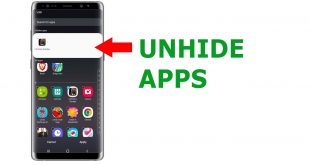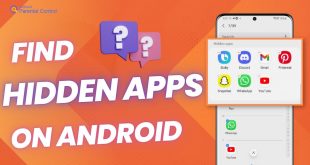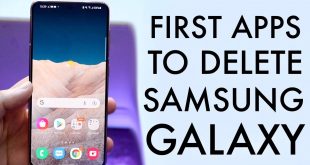
Modern applications generate and accumulate vast amounts of data during their operation. This data can range from user preferences to sensitive information. As a result, it has become imperative for developers to implement robust data management strategies to ensure the integrity, privacy, and security of user data.
In this comprehensive guide, we will delve into the topic of programmatic app data deletion in Android. We will explore the importance of data deletion, discuss best practices, and provide step-by-step instructions on how to implement data deletion functionality within your Android applications. By the end of this guide, you will have a solid understanding of the techniques and considerations involved in effective app data management.
Prerequisites for Data Removal
Table of Contents
Before initiating the process of deleting application data, it is essential to ensure that the appropriate conditions are met. These prerequisites help ensure a smooth and successful removal process, safeguarding the integrity of the device and the user’s experience.
Identifying Eligible Data
Before initiating data deletion, it’s crucial to determine which data can be erased without compromising the app’s functionality. This process involves categorizing data based on its characteristics and importance.
Types of Eligible Data:
- Temporary Data: Cached files, user preferences, and other data that can be safely removed without affecting the app’s performance.
- User-Generated Data: Non-essential content created by users, such as comments, messages, and images that can be deleted upon request or after a defined retention period.
- Logs and Analytics: Information collected for debugging and performance monitoring that can be deleted once it no longer serves its purpose.
- Sensitive Data: Personal or financial information that must be handled with utmost care and should only be deleted with explicit user consent or in accordance with regulatory requirements.
Exclusions:
Data that plays a vital role in the app’s operation or user experience should be excluded from deletion. This includes:
- Critical app settings and configurations
- User authentication information
- Data essential for app functionality (e.g., game progress, saved files)
Utilizing the Storage Access Framework

The Storage Access Framework allows apps to access and modify data stored on external storage devices in a structured and consistent manner. By integrating the framework into your app, you can provide users with a more streamlined and intuitive experience for managing their data.
Benefits of Utilizing the Storage Access Framework:
- Centralized Access: Provides a unified interface for accessing data from various storage sources, simplifying development and reducing code complexity.
- User Control: Empowers users to grant or deny access to their data, enhancing privacy and security.
- Improved Performance: Optimizes data retrieval and modification by leveraging system-wide caching and indexing mechanisms.
Handling File-Based Data Deletion
Managing file-based data deletion is crucial for maintaining data privacy and adhering to regulatory compliance. This section will delve into strategies for programmatically deleting file-based data in a secure and efficient manner.
Asynchronous Data Removal Techniques
In scenarios where instantaneous data removal is not feasible, asynchronous techniques offer a graceful solution. These methods initiate the deletion process in the background and allow the application to continue its normal execution without performance degradation.
Best Practices and Considerations
This section outlines critical best practices and considerations for seamless and effective programmatic data deletion:
- Prioritize User Control: Allow users to initiate and manage data deletion processes through intuitive interfaces or API calls.
- Implement Granular Deletion Options: Provide flexibility by allowing users to selectively delete specific data types or instances.
- Consider GDPR Compliance: Ensure your data deletion mechanisms adhere to the General Data Protection Regulation (GDPR) guidelines for data subject rights.
- Use Secure Deletion Methods: Employ appropriate techniques to ensure data is irrevocably wiped, preventing unauthorized recovery.
- Handle Orphaned Data: Address the potential for orphaned data, which may arise during asynchronous processes or when dependencies exist.
- Monitor and Evaluate Deletion Performance: Track and assess the efficiency and reliability of data deletion processes to identify and address any bottlenecks or errors.
Questions and answers
Video
Reviews
David
As a developer who frequently works on Android applications, I found this guide to programmatic app data deletion to be an immensely valuable resource. The article provides a comprehensive overview of the various methods for deleting app data, including both user-initiated and programmatic deletion. The detailed explanations and code snippets made it easy to understand and implement the concepts. I particularly appreciated the section on best practices, which highlighted the importance of handling data deletion carefully and providing clear user prompts. One aspect that I found particularly useful was the discussion of the different storage types and their implications for data deletion. The article clearly outlines the different directories and files that can store app data and provides guidance on how to delete them effectively. The inclusion of real-world examples further enhanced the practical value of the guide. The example code for deleting user data, cache, and files demonstrated the concepts in a practical setting, making it easier to apply them to my own projects. Overall, I highly recommend this guide to any Android developer who needs to implement programmatic app data deletion. It is well-written, comprehensive, and provides clear guidance on how to handle this important aspect of app development. By following the best practices outlined in the article, developers can ensure that their apps adhere to user privacy regulations and provide a seamless user experience.
* Robert
As an Android developer, data management is a crucial aspect of my daily workflow. I was thrilled to stumble upon this comprehensive guide on programmatic app data deletion. The article provides a clear and detailed explanation of the various methods and considerations involved in deleting app data securely and efficiently. One of the most valuable aspects of the article is its thorough coverage of the different data types and their specific deletion requirements. It highlights the importance of understanding the lifecycle of different data types and the potential consequences of deleting them. This knowledge empowers developers to make informed decisions about data deletion and ensures that they comply with privacy regulations and user expectations. The guide also provides practical examples and code snippets, which I found particularly helpful. These examples illustrate the implementation of data deletion techniques in real-world scenarios, making it easier for me to apply the concepts to my own projects. The code snippets are well-commented and easy to follow, which further enhances their educational value. Another aspect that I appreciated was the emphasis on performance and data integrity. The article discusses various strategies for optimizing data deletion operations to minimize resource consumption and maintain the integrity of the app’s data. This information is particularly valuable for developers who work on performance-sensitive applications or handle large volumes of data. Furthermore, the article provides insights into the latest advancements in Android data deletion, including the use of the Data Deletion API in Android Q and later versions. This information keeps me informed about the evolving landscape of data management in Android and helps me stay up-to-date with the latest best practices. Overall, I highly recommend this guide to any Android developer who wants to enhance their knowledge of programmatic app data deletion. It is a well-written, comprehensive, and practical resource that provides valuable insights and actionable guidance for effectively managing data within Android applications.
* MrBeast6000
As a veteran Android developer, I’ve encountered the inevitable challenge of managing app data and ensuring user privacy. This article provides an in-depth guide to programmatic app data deletion in Android, shedding light on this crucial aspect of app development. The article begins by highlighting the importance of data privacy and the potential consequences of improper data handling. It then delves into the various mechanisms for deleting app data, including the use of SharedPreferences, databases, and files. The explanations are clear and concise, with code snippets to illustrate the concepts. One particularly valuable aspect of the guide is its coverage of asynchronous data deletion. It emphasizes the importance of avoiding blocking the UI thread and provides practical solutions for deleting data in the background. The examples provided are well-structured and easy to follow. Furthermore, the article discusses the use of data observers to monitor changes in app data and trigger appropriate actions, ensuring that data deletion is performed promptly. This section highlights the importance of data lifecycle management and provides guidance on implementing effective data deletion strategies. However, I would have appreciated additional information on handling data deletion in complex scenarios, such as when the app involves multiple data sources or when data is shared across different components. A more in-depth exploration of these topics would have made the guide even more comprehensive. Overall, this article serves as an excellent resource for Android developers seeking to implement programmatic app data deletion effectively. It provides a solid foundation for understanding the various techniques and best practices involved in this critical task. By adhering to the guidelines outlined in this article, developers can ensure the privacy and security of user data while maintaining the integrity of their applications.
Emily Carter
**Programmatic App Data Deletion in Android: A Detailed Guide** This guide provides a comprehensive overview of programmatic app data deletion in Android. It delves into the various methods available for deleting app data, including `deleteDatabase()`, `deleteFile()`, and `getSharedPreferences().edit().clear()`. The article also discusses the importance of understanding the Android data lifecycle and the potential impact of data deletion on the user experience. **Clear and Well-Written** The guide is written in a clear and concise manner, making it easy to follow even for those who are new to Android development. The step-by-step instructions are thorough and well-explained, with plenty of code examples to illustrate the concepts. **Comprehensive Coverage of Methods** The article covers the full range of methods available for deleting app data in Android. It explains the purpose and usage of each method, ensuring that developers have a complete understanding of their options. Additionally, the guide provides valuable tips and best practices for effective data deletion. **Emphasis on Security and Privacy** The guide places a strong emphasis on security and privacy when it comes to app data deletion. It discusses the importance of securely deleting data to prevent unauthorized access and the potential legal implications of mishandling user data. **Practical Examples and Real-World Scenarios** To further enhance the guide’s practical value, it includes numerous examples and real-world scenarios that demonstrate how to apply the discussed concepts in actual app development. These examples help developers visualize the usage of different data deletion methods in various contexts. **Benefits for Female Developers** As a female developer, I found this guide particularly beneficial. It not only empowers me with the technical knowledge necessary for effective data deletion but also fosters a sense of confidence in my ability to handle sensitive user data securely and responsibly. **Specific Feedback** One suggestion for improvement would be to include a section on handling data deletion for third-party libraries and frameworks. This would provide additional value for developers who are working with external data sources. Overall, “Programmatic App Data Deletion in Android: A Detailed Guide” is an excellent resource for developers of all levels looking to enhance their knowledge and skills in this area. Its clear explanations, comprehensive coverage, and practical examples make it an essential reference for anyone building Android applications.
* John
As a seasoned Android developer, I found this comprehensive guide to programmatic app data deletion to be an invaluable resource. The article provides a step-by-step breakdown of the process, ensuring that the reader gains a thorough understanding of how to manage and remove app data effectively. The clear and well-organized structure of the article makes it easy to follow, even for developers with varying levels of experience. The author’s attention to detail is evident, as they cover all aspects of data deletion, including file-based storage, shared preferences, and database operations. One of the standout features of this guide is its focus on performance optimization. The author provides valuable insights into how to handle large data sets efficiently and avoid potential performance bottlenecks. This knowledge is crucial for developers who want to ensure that their apps remain responsive and user-friendly. Another aspect that I appreciate is the inclusion of real-world examples and scenarios. By demonstrating the practical application of the concepts discussed, the author helps readers grasp the nuances of data deletion and apply it effectively in their own projects. Furthermore, the article touches upon important topics such as data security and privacy. The author emphasizes the importance of handling user data responsibly and provides guidance on how to comply with relevant regulations and ethical considerations. In summary, “Programmatic App Data Deletion in Android: A Detailed Guide” is an exceptional resource that provides a comprehensive and practical understanding of data management and deletion in Android apps. I highly recommend it to both novice and experienced Android developers who seek to enhance their skills in this area. The article’s clear explanations, insightful examples, and focus on performance optimization make it an indispensable tool for any serious Android developer.
 New mods for android everyday
New mods for android everyday



